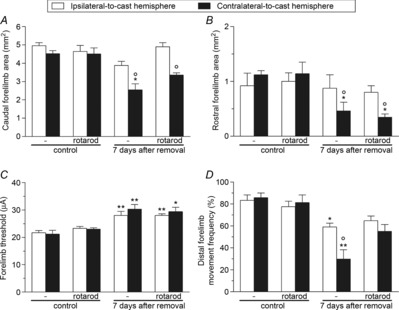Figure 9. Rotarod rehabilitation affected the type of intracortical microstimulation-evoked movements, but not M1 excitability, after unilateral forelimb casting.

Effects of rotarod rehabilitation on the size (in mm2) of caudal (A) and rostral (B) forelimb areas, threshold currents (in μA) in forelimb areas (C), and the frequency (percentage of total forelimb movements) of distal forelimb movements (D) in the contralateral- and ipsilateral-to-cast hemispheres. All measurements were obtained in control rats, and in experimental rats at 7 days after cast removal (following 30 days of cast immobilization). Data are expressed as the mean ± s.e.m. of five measurements per group. Note that motor rehabilitation did not affect cortical size or thresholds, but did increase the distal forelimb movement representation. Statistical results: A, ipsilateral: H = 7.70, P = 0.0526; contralateral: H = 14.10, P = 0.0028; B, ipsilateral: H = 0.77, P = 0.86; contralateral: H = 13.60, P = 0.0035; C, ipsilateral: H = 15.19, P = 0.0017; contralateral: H = 14.14, P = 0.0027; D, ipsilateral: H = 10.64, P = 0.0138; contralateral: H = 14.45, P = 0.0023. *P < 0.05, **P < 0.01 different from control (Kruskal–Wallis test followed by Dunn's test); °P < 0.05 different from the ipsilateral-to-cast hemisphere (Mann–Whitney test).
